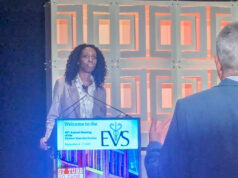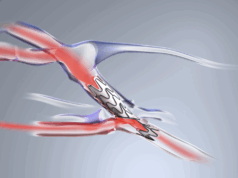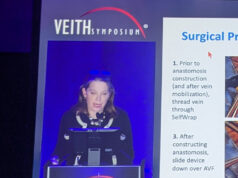
At the 2023 VEITHsymposium (14–18 November, New York, USA), the final day featured a dedicated programme entitled “Improving outcomes in haemodialysis access”, which was made up of five sessions, each covering a different area of haemodialysis access and featuring both presentation and panel discussions led by key opinion leaders in the field.
The day began with a presentation from Karl Illig (FLOW Vascular Institute, Houston, USA), who outlined the lessons he learned from his experience with a lack of trial management. Illig stated that after joining an institute with “no clinical trial experience at all [and] no full-time trial coordinator”, he ended up with “two arteriovenous (AV) access companies mad at [him]” due to issues with data follow-up. After an extensive correction process to fix the issue—which was “ultimately successful”, Illig stated that he felt he had learnt from his experience, continuing to share what he had learned so that others may avoid the same “research screw-ups”. The key points that he outlined are as follows; firstly, do not trust people who have not got any experience running trials, no matter what they say, as it will not end happily. Second, read what you will be working with—Illig categorised these as four separate things: the initial protocol, the data entry forms, the adverse event forms, and the trial event forms. The third thing that Illig emphasised was that you cannot conduct trials without a full-time, trained coordinator, who has access to all medical records (MRs) and picture archiving and communication systems (PACs), and is committed to being present for all consent, procedure, and all follow-up visits. His next point was that you have to insist that “the company knows your weaknesses, such as access to corporate dialysis unit data, absence of PACs, and so on” and that, if needed, you should have this confirmed in writing, so that you cannot be “tripped up by this”, as Illig put it. He also listed several points that the primary investigator (PI) needs to do, including creating “trial visit forms” to be used at each visit that help ensure all necessary questions are asked, making sure you do not enrol a high number or participants until the system definitely works, follow each patient personally, and several other key points. His final point, however, was simple; “if you mess up and you start getting ‘nastygrams’ […] pay attention to those.”
The morning continued with a presentation titled “Does preoperative vascular mapping matter before access creation?” that was given by Charmaine Lok (Toronto General Hospital, Toronto, Canada). Seemingly, the question had an easy answer, as the first slide showed several memes—an amusing captioned picture that is spread widely online, especially through social media—that simply said “yes, of course!” Lok did explore this as the presentation continued though, expanding more on why it was important; it allows for the detection of arterial and venous pathology, as well as the collection of vascular data that can influence access creation, such as size, location, patency, distensibility and much more. Despite this, however, Lok did warn against 100% reliance on evidence gleaned from preoperative vascular mapping. Some issues that she said to bear in mind ranged from “who is doing the ultrasound” to “unnecessary delays”. The main point was that the data gained from vascular mapping cannot be the only guiding factor but must be taken in context with the wide range of other factors that can impact outcomes. Lok referred to this as “a tight rope between evidence and real-life practice”. The rest of her presentation covered the reasons that not all patients receive preoperative vessel mapping—some studies have found no benefit of preoperative mapping in addition to a clinical exam, along with some risk factors benefitting more from preoperative mapping than others—the limitations of current evidence, new data that has been collected, and finally, her own thoughts on the topic. Lok stated that she felt that “everyone should have a good physical exam and history”, as it allows for the detection of obvious limitations, if any are present, and that there are “very few people [who] do not need vessel mapping.” She also added that she feels “the person creating the [AV] access should be the one doing the vessel mapping” and that “ultrasound at the time of surgery appears ideal, and should be done in all patients, if it is feasible.”
The politics of haemodialysis
Terry Litchfield (Access Solutions, Deerfield, USA) began the next session with her presentation, “Current landscape of legal enforcement in the vascular access world”. During this presentation, she highlighted the new guidelines that the Office of Inspector General (OIG) has published recently, stating that “this is for small and big practices, so it is a great resource”. She also expanded on how physicians can tell if they are being investigated by the OIG. “Your billing staff is likely going to receive a request for medical records for more than one patient,” she said, adding that “the requests never say OIG, they never say CMS [Centers for Medicare & Medicaid Services], it’s usually a Medicare intermediary or the QIC [qualified independent contractor]. There are also special audits called comprehensive error rate testing (CERT), recovery audit contractors (RAC) and zone programme integrity contractors (ZPIC), but they don’t ever explain what they are.” When encountering these requests, Litchfield made it abundantly clear what steps physicians must take. “It is really important that your billing team knows to alert you, if any of these letters come in. Your healthcare attorney should be notified immediately.” She finished by saying that “vascular cases are targets for the OIG,” so physicians need to “really be aware of the legal environment, know the rules regarding compliance and create a culture of compliance in your practice.”
The future of dialysis technology
Alexander Yevzlin (Azura Surgery Center, Madison, USA) delivered a talk titled “Initial clinical experience with a novel ultrasound system: feasibility trial update”. During this presentation, which served as an update on a trial sponsored by Sonavex to evaluate the feasibility of a new ultrasound system, Yevzlin expanded on the aims of the new device, which was developed to improve the speed at which fistulas can be evaluated, in order to reduce the dependence on catheters and the amount of time that patients have to use them prior to fistula maturation. The main reason for the development of this new ultrasound system, he said, was that “catheters are inherently bad and very expensive, and they kill people, because nature did not intend for us to have a connection between the germs that live in the outside world and the centre of our hearts.” In order to remove this risk, he stated, we need to reduce the reliance on catheters and move dialysis patients onto permanent access solutions as soon as possible, but in order to do so, issues with fistula maturation need to be overcome. To ensure that fistulas have matured, they need to be evaluated “sooner rather than later”. Yevzlin confirmed that “there is no doubt that ultrasound helps with this, but unfortunately, most dialysis patients are not happy having to see a separate specialist, and who can blame them? They have a very difficult life. They’re a slave to this machine. They feel miserable three days a week at least. And so, it’s no surprise that they don’t show up to their ultrasound appointment.” To resolve this issue, Yevzlin stated that there was a need to remove the issues created by separate clinics for ultrasounds and dialysis. “The idea of this technology,” he explained, “is to support the major delays that are caused by non-compliance and the other factors, like transportation and all this other stuff by creating a one-stop shop right in the dialysis unit here when they have to show up, and doing the ultrasound there. The problem with that, initially, is that ultrasonographers do not just show up randomly on dialysis units, and ultrasound is quite difficult— in its traditional form—to use. It requires special training.”
To overcome this roadblock, the novel ultrasound system has been developed to simplify the process via the use of a bioresorbable implant—placed during fistula creation—that communicates with the transducer, so that all the user needs to do is place it above the implant and the rest of the ultrasound is automated, meaning that “it can be done by anybody,” according to Yevzlin. “In fact,” he adds, “all you have to do is take a transducer, put it on top of the fistula and it does everything for you, [it] requires no skill whatsoever.” The last benefit that Yevzlin highlighted was that, as the data can be remotely accessed thanks to its cloud connectivity, “those who are making decisions about whether the fistula needs an intervention or needs to be cannulated” can do so in a timely manner.
Meeting the challenges
Jason Wagner (Sarasota Vascular Specialists, Sarasota, USA) gave a talk in the final session titled “Optimising dialysis access strategies in the geriatric and bariatric population”. To begin with, Wagner highlighted that part of the issue with the current access strategies is that most of them were created for patients that were both young and eligible for transplantation. Now, however, the patient populations have changed, meaning that they are on average “older and bigger”. With this patient population, he continued, the goal is “bespoke access”; access strategies that have been tailored for each patient. This takes into account social factors for geriatric patients, such as living situations, support networks, and differing levels of “functional independence”, and anatomic and physiologic factors for bariatric patients, such as vessel depth, abdominal adipose deposition, and metabolic factors. He ended his talk with what he felt were the important considerations; if a patient is geriatric, bariatric, or both, a proactive “catheter-last” approach can be successful, along with early referrals, a joint approach from nephrologists and haemodialysis/peritoneal dialysis nurses, and a “thoughtful and protocoled consideration of the patient’s needs”.












